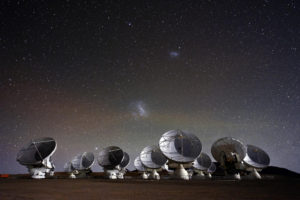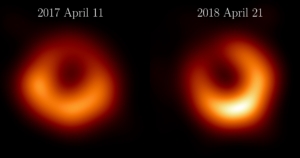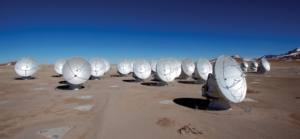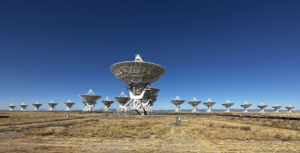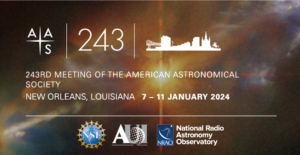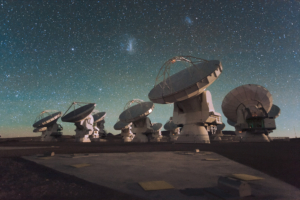The Atacama Large Millimeter/submillimeter Array (ALMA) has just received a “heart transplant,” high in the Atacama Desert in Northern Chile. ALMA, the most complex astronomical observatory ever built on Earth, installed a new hydrogen maser. Funded by the National Radio Astronomy Observatory (NRAO), this upgrade marks an essential investment, setting a new standard in reliability for observations.
New Details of Supermassive Black Hole’s Shadow Revealed
The Event Horizon Telescope (EHT) Collaboration has released new images of supermassive black hole M87*. A recent paper published in the journal Astronomy & Astrophysics presents new images from data collected by the Atacama Large Millimeter/submillimeter Array (ALMA) and several other instruments within the EHT. These new images show a bright ring surrounding a deep central depression, “the shadow of the black hole,” as predicted by general relativity. Excitingly, the brightness peak of the ring has shifted by about 30º compared to the first images, which is consistent with scientists’ theoretical understanding of variability from turbulent material around black holes.
Early Evolution of Planetary Disk Structures Seen for the First Time
An international team of astronomers have found ring and spiral structures in very young planetary disks, demonstrating that planet formation may begin much earlier than once thought. The results were presented today at the 243rd Meeting of the American Astronomical Society.
Mystery of Star Formation Revealed by Hearts of Molecular Clouds
An international team of astronomers has revealed mysterious star formation at the far edge of the galaxy M83. This research was presented today in a press conference at the 243rd meeting of the American Astronomical Society (AAS) in New Orleans, Louisiana. The research used several instruments operated by the National Science Foundation’s National Radio Astronomy Observatory (NRAO), including the Atacama Large Millimeter/submillimeter Array (ALMA), the Karl G. Jansky Very Large Array (VLA), and the Green Bank Telescope (GBT), along with the National Astronomical Observatory of Japan’s (NAOJ) Subaru Telescope and the NASA Galaxy Evolution Explorer (GALEX).
NRAO in the press at AAS 243
New scientific results from the Atacama Large Millimeter/submillimeter Array (ALMA), the Very Large Array (VLA), and Green Bank Observatory…
ALMA Conference Celebrates 10 Years of Astronomical Discoveries
Within the framework of the scientific conference “ALMA 10 years: Past, Present, Future,” which is bringing together 180 astronomers…


